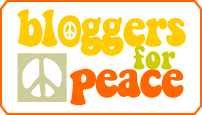Everywhere a lot of people want to use a lot of disinfectants, antibacterial products, Dettol, Alcohol, a.o..
Once people were confronted with the seriousness of the possible spread of the new 6th coronavirus they wanted to disinfect the surroundings. China, South Korea, France, Spain, and several other countries thought they best would be to spray copious amounts of disinfectant throughout densely populated urban areas. Fleets of trucks, drones, and even robots doused streets, parks, playgrounds, and other outdoor public spaces with virus-killing chemicals.
On television, we could see that in several countries government people even went into the houses spraying loads of chemicals.
China was the first country, in January 2020, to start sanitizing its cities — and as soon as it did, reports of poisoned animals started coming in. In February, an investigation by the Chongqing Forestry Bureau in Chongqing, a huge city in southwestern China, found that at least 135 animals across 17 species — including wild boars, Siberian weasels, and blackbirds — had died after exposure to disinfectants, according to Chinese news agency Xinhua.
Disinfectant ingredients, mostly sodium hypochlorite, chlorine, and bleach, are “acutely toxic to both terrestrial and aquatic animals,” says Dongming Li, professor of ecology at Hebei Normal University and co-author of the Environmental Research analysis, which was based solely on the Chongqing Forestry Bureau’s investigation. Li and his colleagues did not personally examine the dead animals to confirm what had killed them.
Even so, the animals’ deaths are concerning evidence, Li believes, that
“the overuse of disinfectants may contaminate the habitats of urban wildlife.” (Read more about how animals are moving into cities.)
Li’s team is now calling on world leaders to regulate the dispersal of disinfectants in urban areas, which they say is being done without input from the scientific community.
Furthermore, we also want to warn people antibacterial products are of no use against viruses, and an overdose of such products kills also the necessary and good bacteria we do need, whilst it makes the bad bacteria resistant. That will give a lot of problems in the treatment and prevention of bacterial infections.
Antibiotics have been used since ancient times, but the last few years there was such an increase that many bacteria managed to resist those articles. The World Health Organization has classified antimicrobial resistance as a widespread
“serious threat [that] is no longer a prediction for the future, it is happening right now in every region of the world and has the potential to affect anyone, of any age, in any country”. {Antimicrobial resistance: global report on surveillance(PDF). The World Health Organization. April 2014. ISBN978-92-4-156474-8. Retrieved 13 June 2016.}
People should be fully aware that chemical disinfectants kill viruses, bacteria, and other microorganisms by destroying their cell walls and damaging their proteins through oxidation. If inhaled or ingested by people or animals, these substances can irritate or corrode the mucous membranes of the respiratory and digestive tracts. In extreme cases, exposure can lead to death.
We also may not forget that using all those disinfectants, also by washing our hands with such products they all come into our water system. Christopher J. Schell, professor of urban ecology at the University of Washington, in Tacoma, ways:
“If you put toxicants into a system, they are going to travel through the food web,”
While sanitizing frequently touched surfaces can help reduce the spread of the coronavirus, scientists now know that most people get the disease by breathing in droplets in the air from an infected person and not so much by coming into contact with a contaminated surface.
That’s why, in May, the World Health Organization advised against using disinfectants outdoors, both because streets and sidewalks
“are not considered as routes of infection for COVID-19”
and because spraying such chemicals
“can be noxious for people’s health and cause eye, respiratory or skin irritation or damage.”
The WHO didn’t mention the harm to wildlife as well, but many wildlife rangers and animal scientists warn people of the danger of those products contaminating the environment and endangering wildlife. Though with that knowledge there are still several countries which continue to spray disinfectants in public areas.
“The ongoing COVID-19 pandemic has caused public fear in many countries. Many health agencies around the world may spray more disinfectants to ensure the virus is fully killed and to alleviate their worries of viral infection,”
Li says.
Politicians who dare to take the right measures, demanding restrictions to where people go, are not risking their popularity and therefore ordered going on the streets with spraying trucks or spraying agents, or drones, and even robots dousing streets, parks, playgrounds, and other outdoor public spaces with virus-killing chemicals, is more visible for many, who then would think their government does it best. Though it would be much better and safer for the environment if people would be encouraged to stay home.
“Rather than indiscriminately spraying high volumes of disinfectants in biodiversity-rich areas such as urban parks, wetlands, and green spaces,”
Dongming Li says,
“it would be preferable to suspend human activities in such places.”
*
Please find also to read:
- Why antibodies may not be the key to beating coronavirus
- Why COVID-19 will end up harming the environment
- Antarctica is the last continent without COVID-19. Scientists want to keep it that way.
- How Wild Animals Are Hacking Life in the City


















































